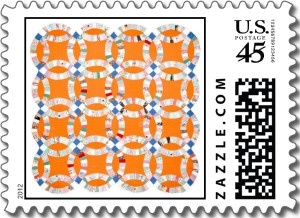 |
| Don't mess with Aunt Bee, and don't mess with quilters! |
This blog post is a little unusual, because I'm unhappy about something. It takes a lot to make me feel this way about anything.
Today I discovered a link to an opinion piece published by the Times Free Press of Chattanooga, Tennessee last week. The piece is criticizing the funding of the International Quilt Study Center in Lincoln, Nebraska, and in the piece, the unnamed author calls quilts irrelevant.
IRRELEVANT?
WHAT?!?!?
Sue Reich had posted the link on her Facebook wall for all to see, along with the comment, "Quilts are historically the legacy of women. This guy just doesn't get it." She's right.
Here is a link to the article:
http://www.timesfreepress.com/news/2012/nov/15/museum-needles-taxpayers-free-press/
Here's the opening paragraph:
A quilt museum may seem like an ideal summer vacation destination for the Waltons, Aunt Bee or Ma Ingalls, but quilting fails to hold the interest of most Americans today. Since department stores carry a wide selection of affordable bedding, and special memories can be recorded by photographs and videos rather than by laboring over scraps of cloth, quilts have become largely irrelevant in modern culture.
When I read it, my blood pressure spiked, and I immediately tried to post a comment. Since their comments section wasn't functioning properly for me, I took to Twitter, and posted this message to their Facebook page:
So, I am asking you, my friends and readers of this blog, to let the Times Free Press of Chattanooga, Tennessee, know how you feel about this opinion piece. I realize it's the day before Thanksgiving and we've all got a lot to do, but it's not a lot to ask and I don't ask for things from you often. If you can't get to it today, put it on your to-do list for after the holiday. We need to let them know that quilts are highly relevant, and the newspaper has an obligation to its readers to publish responsible opinions.
To read the opinion and post comments,
click here.
To post comments to their Twitter page,
click here.
To post comments to their Facebook page,
click here.
Thank you all, and when you're giving thanks around the Thanksgiving dinner table tomorrow, I hope you will express your appreciation and love for quilts and quiltmakers.
























































